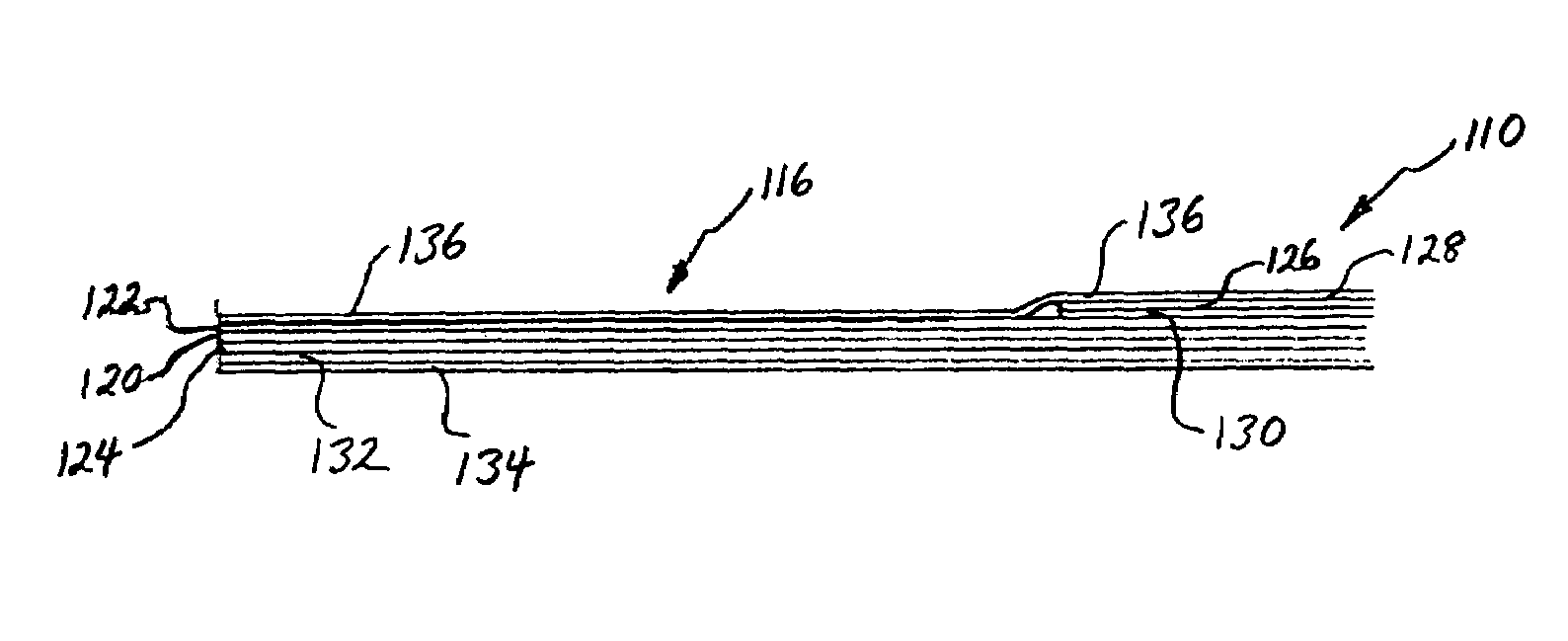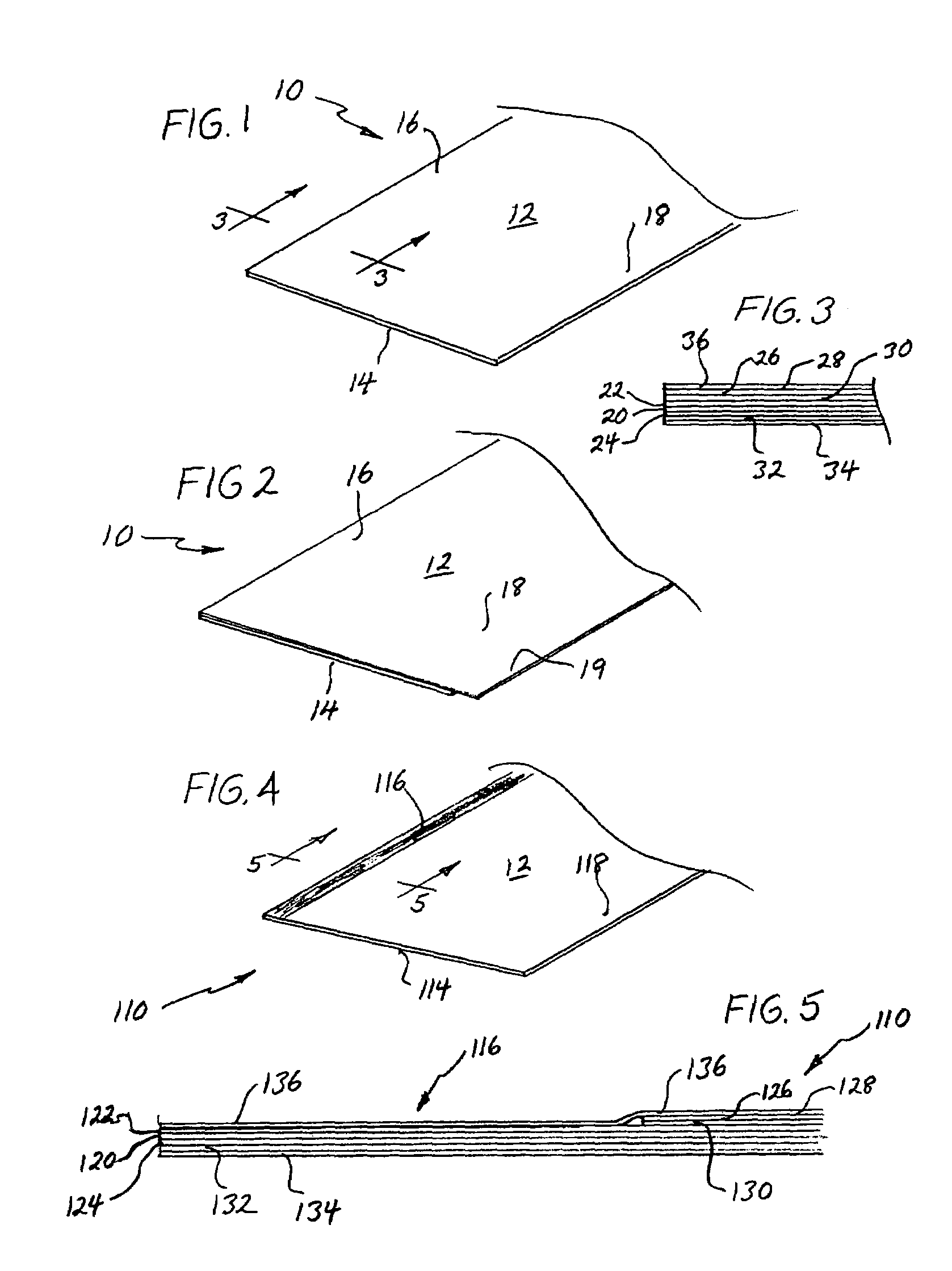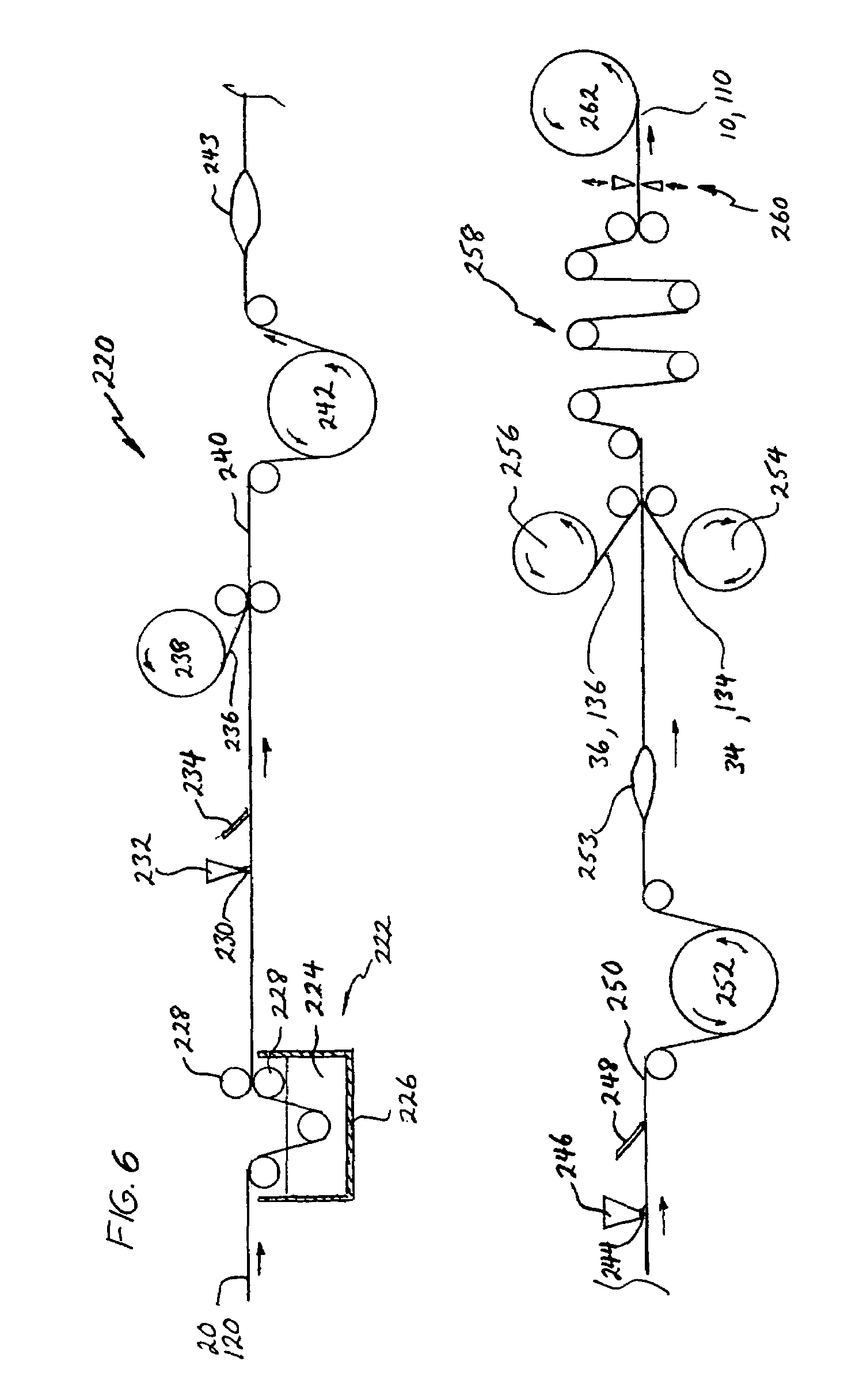Highly reflective asphalt-based roofing membrane
a technology of asphalt-based roofing and high-reflectivity, which is applied in the field of asphalt-based waterproof roofing membranes, can solve the problems of market that do not meet the requirements of epa energy-star reflective requirements, the cost and time required to clean the labor-intensive application of the coating to the top surface of the membrane, so as to improve the performance of the composite, improve the appearance of the top surface, and improve the adhesion
- Summary
- Abstract
- Description
- Claims
- Application Information
AI Technical Summary
Benefits of technology
Problems solved by technology
Method used
Image
Examples
Embodiment Construction
[0019]The prefabricated asphalt-based waterproof roofing membrane 10 of the subject invention, shown in FIGS. 1, 2 and 3, has a top major surface 12 and a bottom major surface 14 that are each defined by the length and width of the membrane 10. The prefabricated asphalt-based waterproof roofing membrane 10 has a lateral edge portion 16, typically called the selvage edge portion of the roofing membrane, which extends for the length of the prefabricated asphalt-based waterproof roofing membrane. The lateral edge portion 16 of prefabricated asphalt-based waterproof roofing membrane 10 is typically about four inches in width and when the prefabricated asphalt-based waterproof roofing membrane 10 is installed on a roof, the top surface of this lateral edge portion 16 is overlapped and sealed to the underside of a lateral edge portion 18 of an adjacent prefabricated asphalt-based waterproof roofing membrane 10 to form a waterproof weather secure seam. The edge portion 18 has substantially...
PUM
| Property | Measurement | Unit |
|---|---|---|
| temperatures | aaaaa | aaaaa |
| thickness | aaaaa | aaaaa |
| temperature | aaaaa | aaaaa |
Abstract
Description
Claims
Application Information
 Login to View More
Login to View More - R&D
- Intellectual Property
- Life Sciences
- Materials
- Tech Scout
- Unparalleled Data Quality
- Higher Quality Content
- 60% Fewer Hallucinations
Browse by: Latest US Patents, China's latest patents, Technical Efficacy Thesaurus, Application Domain, Technology Topic, Popular Technical Reports.
© 2025 PatSnap. All rights reserved.Legal|Privacy policy|Modern Slavery Act Transparency Statement|Sitemap|About US| Contact US: help@patsnap.com



